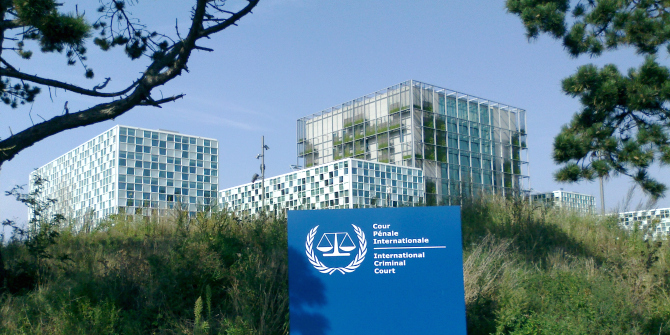In Israel and South Africa: The Many Faces of Apartheid, Ilan Pappé offers an edited collection that seeks to expand upon controversial comparisons between the segregated political system of apartheid South Africa and that of contemporary Israel. Claire Constant welcomes this as a nuanced volume that seeks to learn from the struggles against apartheid in South Africa and to animate important discussions about the possibilities of finding a single-state solution.
Israel and South Africa: The Many Faces of Apartheid. Ilan Pappé (ed.). Zed Books. 2015.
 In October 2015, by upholding the convictions of a dozen activists from the Boycott, Divestment and Sanctions (BDS) Movement, France’s Court of Cassation effectively held that advocating the boycott of Israeli products was illegal. Over the past ten years, the BDS Movement – which attempts to increase economic and political pressure on Israel ‘until it complies with international law and Palestinian rights’ – has gained attention from around the world. Similarly, the movement’s campaigns, which seek to echo the actions of anti-apartheid activists against white minority rule in South Africa, have garnered growing support. Yet, as shown by the French court’s decision, comparisons between Israel and apartheid South Africa remain controversial. In the midst of impassioned debates, Israel and South Africa: The Many Faces of Apartheid seeks to deepen the discussion of Israel as an ‘apartheid state of a special type’ (350).
In October 2015, by upholding the convictions of a dozen activists from the Boycott, Divestment and Sanctions (BDS) Movement, France’s Court of Cassation effectively held that advocating the boycott of Israeli products was illegal. Over the past ten years, the BDS Movement – which attempts to increase economic and political pressure on Israel ‘until it complies with international law and Palestinian rights’ – has gained attention from around the world. Similarly, the movement’s campaigns, which seek to echo the actions of anti-apartheid activists against white minority rule in South Africa, have garnered growing support. Yet, as shown by the French court’s decision, comparisons between Israel and apartheid South Africa remain controversial. In the midst of impassioned debates, Israel and South Africa: The Many Faces of Apartheid seeks to deepen the discussion of Israel as an ‘apartheid state of a special type’ (350).
Ilan Pappé, one of Israel’s ‘New Historians’ and Professor of History at the University of Exeter, brings together political scientists, policymakers, journalists, lawyers and sociologists to compile a variety of substantive comparisons between the two situations. Within this comparative framework, the issues addressed include topics such as the historical roots of both regimes and the practice of indigenous femicide and its significance for apartheid racial elites, as well as the nature and organisation of protest groups in both segregation contexts. The book makes a compelling contribution to a topic that, while having been the focus of considerable media and activist attention, has rarely been examined as an academic issue.
The reader is warned in the introduction: none of the contributors question the validity of the comparison between modern-day Israel and apartheid South Africa. Rather, the book intends to offer a better study of the similarities and differences that characterise this comparison. The outcome is an original and in-depth contribution to the debate, which looks at different aspects of these political systems of segregation and expertly demonstrates how apartheid as a particular regime of ‘separateness’ is not solely specific to the South African context.
 Image Credit: The West Bank Barrier (Wikipedia Public Domain)
Image Credit: The West Bank Barrier (Wikipedia Public Domain)
The contributions are grouped within four subsections: ‘Historical Roots’, ‘The Boundaries of Comparison’, ‘Nuanced Comparisons’ and ‘Future Models and Perspectives’. While the historical and comparative breadth of the book in its entirety must be commended, the forward-looking ‘Future Models and Perspectives’ section is of particular importance as it succeeds in showing the lessons that can be learned from the successful anti-apartheid struggle in South Africa. Certainly, this is the most powerful message to be taken from the book: that there is room to explore an alternative, peaceful future for Israelis and Palestinians. Events such as the summer 2014 operations in Gaza or the more recent stabbing attacks and ensuing retaliations only seem to add to the inextricability of the status quo. Chapters Eight and Nine of the book, however, offer very engaging and intriguing arguments in favour of a single-state solution.
In Steven Friedman’s section, the South African academic examines the belief held by many that an ethnic state is the only guarantee of security for Jewish Israelis. However, Friedman argues that the creation of such a state in a multi-ethnic environment would only result in increasing pressure and insecurity. While the South African experience should not be hailed as a model blueprint, one of the primary lessons to be learned is that a two-state solution cannot, and will not, ensure Jewish security. Well-meaning reforms that attempt to accommodate the multi-ethnic fabric of society will inevitably fail because ultimately the very essence of the state – its ethnic nature – will have to be reconsidered. Friedman offers the opinion that ‘[t]he replacement of the ethnic state by one shared by Israelis and Palestinians, built on mutual guarantees, is the only route to a peaceful Jewish life in the region’ (291).
A single-state solution to the conflict is also the conclusion reached by Virginia Tilley in her chapter on sovereignty. Tilley argues that the international legal framework of belligerent occupation is not relevant to the factual situation in the occupied Palestinian territories (oPt). In fact, she argues that the international community’s calls to withdraw from the oPt, which are efforts to protect the rights of Palestinians (including their right to self-determination), may actually do more harm than good. Tilley brilliantly demonstrates that the facts are better identified as ‘settler colonialism’, and elaborates on the stalemate in which the Palestinians find themselves. On the one hand, the nature of the Israeli occupation – ‘settler colonialism’ – and its duration to date have rendered the option of Palestinian statehood ‘obsolete’ (321). On the other hand, the international community’s relentless affirmation that Israel is not a legitimate sovereign and should allow for the formation of a Palestinian state is, in effect, absolving Israel from respecting the rights of all citizens within the borders of the territory on which it exercises de facto sovereignty. While Tilley admits that the recognition of this settler colonial sovereignty is a painful normative shift, it would be a pragmatic acknowledgment of what is happening on the ground. Fully acknowledging this, and starting to frame the conversations along the lines of a single-state reality, would mean opening up discussions and finally finding new practical ways of pursuing justice.
Israel and South Africa: The Many Faces of Apartheid could well become essential reading for anyone interested in understanding arguments about the Israeli state’s colonial and segregationist system, as well as the lessons to be drawn from a comparison of the Israeli and South African contexts. The authors argue for the need to explicitly call Israel an apartheid state, and demonstrate how much there is to learn from the successful fight against apartheid in South Africa. In such a heated political and academic debate, this book is a welcome contribution: one which will surely bring about important animated discussions, including with regards to the possibilities of a single-state solution.
Note: This review gives the views of the author, and not the position of the LSE Review of Books blog, or of the London School of Economics.








2 Comments